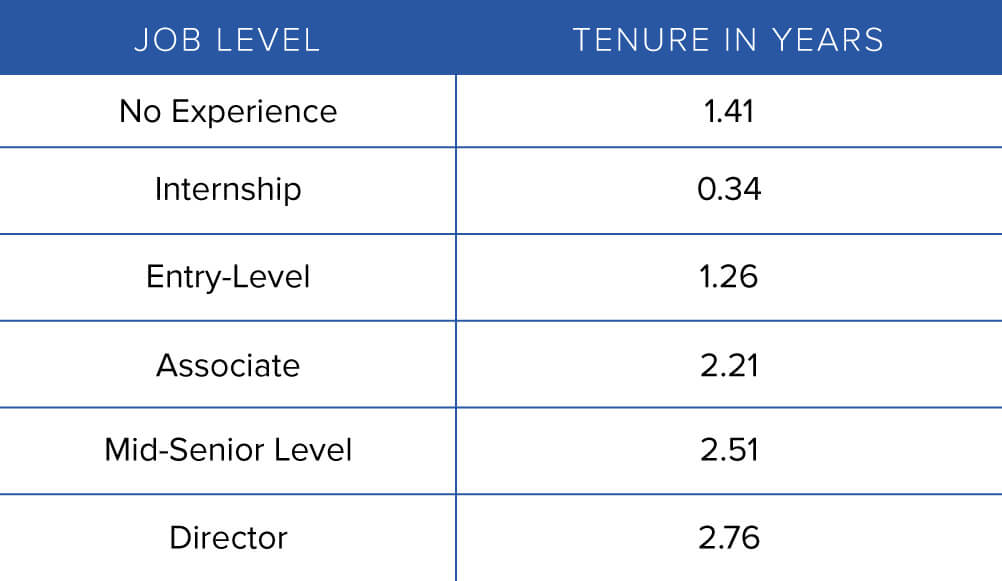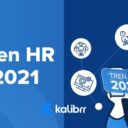Fast Tech and Fast Tenure: How Long I.T. Pros Stay at Their Jobs

As quickly as the technology of today has advanced is the similarly quick time Information Technology professionals move from one job or company to another
It’s well documented how it’s now common for professionals to spend just around two to three years or less at a single job. Gone are the days when entire careers are spent with only one company, and just about everyone these days easily move on to new jobs or companies– be it for higher pay, better benefits, new challenges, or greater responsibilities, to name a few.
The Information Technology industry has been no exception, as I.T. professionals seemingly move on to new roles just as quickly as the advancement of the tech and software they typically use in their work. The quick turnaround can make it challenging for organizations, particularly in this case, to better sustain their efforts to digitize their operations or continue their tech-related business.
While some employees can prove to be exceptions, it remains more likely that most will leave after a modest time serving at their I.T. role, and to help companies be better prepared for the “churn”, Kalibrr reached into data collected throughout the platform’s history to provide a glimpse at how often employers will be hiring and welcoming I.T. professionals to the fold.
TOPICS
Don’t expect the youngsters to remain for too long
A general characteristic of today’s workforce is that it keeps getting younger. According to a number of international think tanks, roughly 75-percent of the global workforce will be comprised of Millennials– or those born between around 1980 to around 1995 (depending on who’s defining it)– by 2025. Then, as 693 million Baby Boomers– or those born from the mid-1940s to the mid-1960s– reach retirement, around 1.3 billion members of Generation Z (those born after 1995) will also be entering the workforce in the next decade.
Needless to say, the “youngsters” comprise the majority of the I.T. teams in different companies, what with the two recent generations’ affinity for technology. Most of them were raised and educated as tech advanced at an unprecedented pace, and most of their careers now coincide with the digitization of most businesses across almost all industries. With that said, as new technologies and related career opportunities arise, it is expected that they’ll also be moving along
Based on observations of Kalibrr job-seekers through the years, the company found that interns in the I.T. field only lasted several months in their role, which is expected given that internships are commonly embarked on as an academic requirement. However, working full-time did not drastically change the time spent by professionals in the I.T. jobs they had following graduation, with most of them only staying for as little as a year-and-a-half before moving on to a new job or company.
On the other hand, even the young professionals with a year or two of experience did not stay too long at their later jobs, with the still-entry level I.T. remaining at their second or third jobs for only a little over 15 months before working elsewhere.

Associates and up stay a little longer, but not by a lot
I.T. professionals who’ve had more experience, be it as web developers, software engineers, or data jobs, among others, tended to stay at their jobs longer. This is likely because associated roles and higher, such as managers and directors, are fewer and farther in between than entry-level roles.
Despite this, the time I.T. professionals spent at senior-level jobs was not far and away higher, as they indeed stayed beyond two years, but averaged no more than three before moving on to a new job at another company. Expectedly, those at the top or director level stayed the longest, as most organizations typically employ only one which, as mentioned, makes for directors moving to other director jobs not as quick or easy.
The same could be said of those who fulfilled associate or mid-senior-level I.T. roles. While they comparably stayed longer than their entry-level contemporaries, their tenures were considerably modest in general, as their tenures lasted only between 26 to 30 months before they moved on.
Keeping pace with tech may get them to stay
One of the key concerns for many organizations is how tech seemingly advances quicker than the skills of the associated workforce. Because of this, employers typically find it challenging to find the candidates that are fully suited to take care of their digital initiatives.
Then, in the instances that they do find the personel, the tendency is that these employees leave not only for reasons like better salary or culture fit but also for the opportunity to use new tools and learn new tech skills in more advanced organizations.
With that said, and effective way to attract and retain I.T. professionals is to make sure the company provides opportunities for them to add new tech skills. While some may worry about upskilling being a way to embolden them to leave, the most successful companies see this as investing in people who can actually further the organization’s digital initiatives.
Of course, the organization must also be in constant pursuit of modern solutions and processes, as the young professionals of today have high regard for innovation, and careers that involve little to none of it will not hold their interest for long.
These are but a few of the ways to better retain I.T. professionals, and employees in general. For more insights on the job tenures of the modern professionals, or assistance with your recruitment, sign up for Kalibrr and start hiring better today!
Kalibrr is a technology company that aims to transform how candidates find jobs and how companies hire talent. Placing the candidate experience at the center of everything it does, the company continues to attract the best talent from all over, with almost three million professionals and counting. Kalibrr ultimately connects these talents to companies in search of their next generation of leaders.
The only end-to-end recruitment solutions provider in Southeast Asia, Kalibrr is headquartered in Makati, Philippines, with offices in San Francisco, California, and Jakarta, Indonesia. Established in 2012, it has served over 19,000 clients and is backed by some of the world’s most powerful start-up incubators and venture capitalists. These include Y Combinator, Omidyar Network, Patamar Capital, Wavemaker Partners, and Kickstart Ventures.
For more business and recruiter advice, follow Kalibrr on Facebook, Twitter, LinkedIn, and Instagram.






No comment available yet!